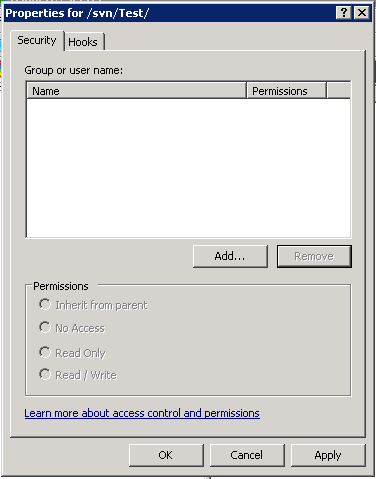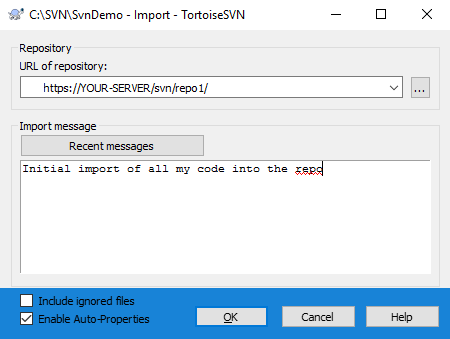

- Visual svn client how to#
- Visual svn client install#
- Visual svn client code#
- Visual svn client free#
You'll want to make sure you have write access somewhere to the repository. Replace to the actual name of the repository below. Now we want to configure the users and access to the repository. Note! To delete a repository just delete the folder containing the repository: Read more: How do I manage several different projects under Subversion? To find out what drives are mounted, use the following command. Replace * below with the correct path for your device. Otherwise you might find that you have spent hours configuring an SVN repository in the RAM disk and lost data when the NAS has been restarted. It might be a good idea to ensure that you have the right folder path setup by creating a temporary file in the directory path that you have decided on and restarting the QNAP NAS device to ensure that the files still exist in the directory. This is a different effect, reported in the QNAP forum, also caused by this problem.So replace /*/ in the following commands with a path on your harddisk e.g.

Visual svn client free#
Also the capacity of the repository is limited to the free space in the ram disk. The directory /share itself belongs to /dev/ram, so if you create mkdir /share/svn your repository will be located in the ram disk and after reboot your repository doesn't exist anymore. to /share/HD?_DATA or /share/MD?_DATA (? is one character from A.Z). This is wrong! Depending on your QNAP model your harddisk(s) are mounted e.g. Note! Create the repository folder somewhere on your harddisk! An earlier description was to create the repository in /share/svn. So, create the folder and initialize it for sharing with svnadmin: Remeber to put these files in a private folder because it will contain config files and so on. If vi has an error 'terminal capability "cm" required', then type this in telnet:ĭecide where you want all the files to be located on the QNAP. The following link has a summary of the commands in vi: This can be done with the vi text editor. The following instructions require some editing of config files. If everything else fails and the svn command is not getting recognised due to path issues (a known issue for which a fix is available as indicated above) and svn installation has succeed then you can prefix /opt/bin/ to make use of the svn, svnserve and svnadmin commands as applicable. # & /bin/echo "export PATH=/opt/bin:/opt/sbin:$PATH" > /et$ # /bin/cat /etc/profile | /bin/grep "PATH" | /bin/grep "/opt/bin" 1>/dev$ Make sure you open this file and verify accordingly.
Visual svn client code#
Please note that the only way to ensure that the '/opt/bin' and '/opt/sbin' files are in the PATH environment variable permanently is to ensure that the below block of code is there in the /etc/init.d/Optware.sh file. It is a good idea to ensure that these directories exist in the /etc/init.d/Optware.sh file.Īs a temporary fix you can do this either by the export command: Maybe you need to add '/opt/bin' and '/opt/sbin' to the PATH environment variable.
Visual svn client install#
Note that the above commands will automatically download and install subversion automatically.
Visual svn client how to#
For win7 users, this link shows how to run telnet:Ĭonnect and log into your QNAP using SSH or Telnet (e.g. Telnet must be enabled from the QNAP web page. The first step in the installation is to Install Optware IPKG through QPKG.

But until further notice it has to be installed through ipkg. Hopefully it soon will be avaible as a QPKG package so it easily could be installed through the webinterface. Clients contact an svnserve server by using URLs that begin with the svn:// or svn+ssh:// schema.Īt the moment Subversion is not included in the firmware of the QNAP. The svnserve program is a lightweight server, capable of speaking to clients over TCP/IP using a custom, stateful protocol. Its goal is to be a mostly-compatible successor to the widely used Concurrent Versions System (CVS). It is used to maintain current and historical versions of files such as source code, web pages, and documentation. Subversion (SVN) is a version control system initiated in 2000 by CollabNet Inc. 2.6 Alternative user, group and repository management (windows only).


 0 kommentar(er)
0 kommentar(er)
